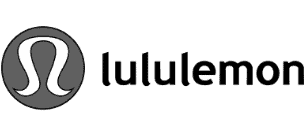Hi guys … Mercey here!
Dairy-free milk alternatives (aka “alt milks”) have been taking over coffee shops and Instagram for years now. Is it only me or does is seem like soy milk used to be the only other option besides real milk? And now it seems like there’s a new milk coming out all the time.
Why dairy-free?
First of all, I think it’s good to know that while plenty of people do give up dairy for reasons other than an allergy, for many people, dairy is fine for them and they can tolerate it well. It’s all about knowing yourself and your body, and what makes you feel best. If you’re not sure if dairy is an issue for you, try pulling it out for a few weeks (4 weeks is the best length time to get a real idea) and see how you feel. If you do feel better and notice changes (like maybe less bloating, digestive distress, breakouts etc.) then maybe it’s time to consider limiting dairy from your diet in the long term. Other than that, if you don’t notice issues or think it’s a problem, it’s always a good idea to have dairy that is full-fat, organic, from grass-fed cows, and is produced without any hormones or antibiotics.
The truth is, all of the different milks out there definitely have their strengths and weaknesses. To begin with, if you’re looking for the healthiest option you’ll want to look out for common additives that are less-than-desirable like sugar, soy lecithin, sulfites, MSG, carrageenan, and cornstarch. I personally follow a more Paleo-style approach to eating, so I avoid anything with soy (like soy lecithin) and corn (cornstarch). Even if you don’t follow a Paleo protocol, it’s better to choose products with as few ingredients as a general rule. (Less ingredients means less of chance for weird or gross additives to worry about in the first place!) Also, organic is always best since to ensure what you’re drinking isn’t laced with pesticides that are linked to so many health issues.
Ingredients to Avoid in Dairy-free Milk Alternative Products
I know it’s hard to control what is in your milk when you buy your coffee or matcha lattes at your local coffee shop. But when you do buy your own, it’s a good idea to know what to look for when choosing a product. The first time I experimented with cutting out dairy and cleaning up the other foods I ate was when I did the Whole30 a few years ago. The Whole30 advises people on the program to avoid these ingredients in milk (and I still try to avoid these when I can!):
- Soy lecithin: emulsifier
- MSG: flavor enhancer known to give people adverse reactions
- Carrageenan: used for thickening, linked to inflammation and stomach issues
- Cornstarch: super-processed starch, has no nutritional value, corn/grains are avoided by some people due to inflammation
- Sulfites: sulfites are often used as preservatives, and are found in some foods and in wine. Some people are sensitive to them, which is why it’s a good idea to avoid them if you’re not sure and want to feel your best.
So which alt-milk is right for you?
The type of milk you choose all depends on your preferences, dietary restrictions, and overall health goals. Besides avoiding the ingredients above, what else do you need to know about the different types of milk? Here’s a guide to 5 different types of milk alternatives and some things to consider to find out which one is right for you:
Almond Milk
I consider almondmilk the OG of the alt-milk craze. And even though it’s been popular for a bit, it definitely still stands strong in terms of nutrition. Almonds are rich in vitamins and minerals, and calcium. I know what you’re thinking…so I don’t need dairy to get calcium? And that’s right! I know the “Got Milk?” ads we all grew up on would like us to think otherwise…but there are plenty of plant-based sources of calcium out there, including almonds and almond milk.
Coconut Milk
Coconut and coconut milk is higher in fat, but it contains healthy MCT fats that support energy and brain health. Coconut milk is a great option for coffee since it’s so creamy and it’s also super versatile in cooking dishes that you want to taste creamy like maybe vegan soups or curry.
Soymilk
I don’t like to say that any food if “bad” for you, but I will say that I personally don’t eat soy since it’s one of the most heavily processed foods in the country, and is often GMO and contaminated with pesticides. Also, soy is a phytoestrogen, which means your body responds to it like the estrogen hormone in your body. And for some women, especially those with hormonal imbalances, PCOS, or even bad PMS, excess estrogen in your body is not a good idea. So for this reason I also choose to opt for other alternatives.
Oat Milk
Oat milk is super-buzzy these days, but as celebrity nutritionist Kelly Leveque (and one of my fave experts in the field) pointed out in this Insta post, most oat milks right now are made with rapeseed aka canola oil (which is highly inflammatory). Also, a lot of oats are produced in facilities that handle wheat (so they’re contaminated with gluten, even though technically oats are gluten-free).
Besides the gluten and canola oil factors, conventional oats are heavily contaminated with pesticides. So once again, organic is really important when it comes to oat milk. Also, if you do choose oat milk try and find a brand that is certified gluten-free and organic. Bonus points if you make your own! Here’s a recipe.
Hemp Milk
Like Kelly Leveque pointed out in her post, hemp milk is higher in protein than most other plant-based milk, so if you’re vegan or looking to boost your protein, then hemp milk is a great choice. Also, as McKel Hill points out, Hemp milk is a good source of omega-3 fatty acids which are anti-inflammatory and such a great brain-health booster. It can be hard to get omega-3s if you don’t eat fish or take fish oil, so incorporating more plant-based sources is a great way to boost brain health.
At the end of the day, the most important thing to remember is that organic is always best when it comes to milk. And if you’re not sure which milk is right for you, try a few different options and see how you feel. But by avoiding a few key nast additives like sugar and carrageenan, you’d be surprised on how different you can feel by making a few small changes like switching the milk in your afternoon latte.
About Mercey:
I’m a wellness writer, content consultant, and a certified holistic health coach through the Institute for Integrative Nutrition. I’ve always been wellness obsessed (and I’m a longtime reader of SATC, of course!) but started my career in the wellness industry when I moved to NYC and landed my dream job at Well+Good where I got a crash course in all things wellness, fitness, holistic health, functional medicine, and clean beauty. Now, I write and report on the latest trends in wellness for sites like Well+Good and Sporteluxe.com, and I also work with brands in the wellness industry on content strategy and marketing. You can follow me on Insta @merceylivingston, and read more of my wellness content over at merceylivingstonwellness.com.
xx
Mercey
Sources:
https://www.drweil.com/diet-nutrition/food-safety/is-carrageenan-safe/
https://draxe.com/is-cornstarch-gluten-free/
https://www.livestrong.com/article/500629-are-sulfites-good-for-your-health/
https://www.wellandgood.com/good-food/is-oat-milk-healthy/
http://coveteur.com/2017/07/28/best-alternative-milk-guide-nut-milk/

















